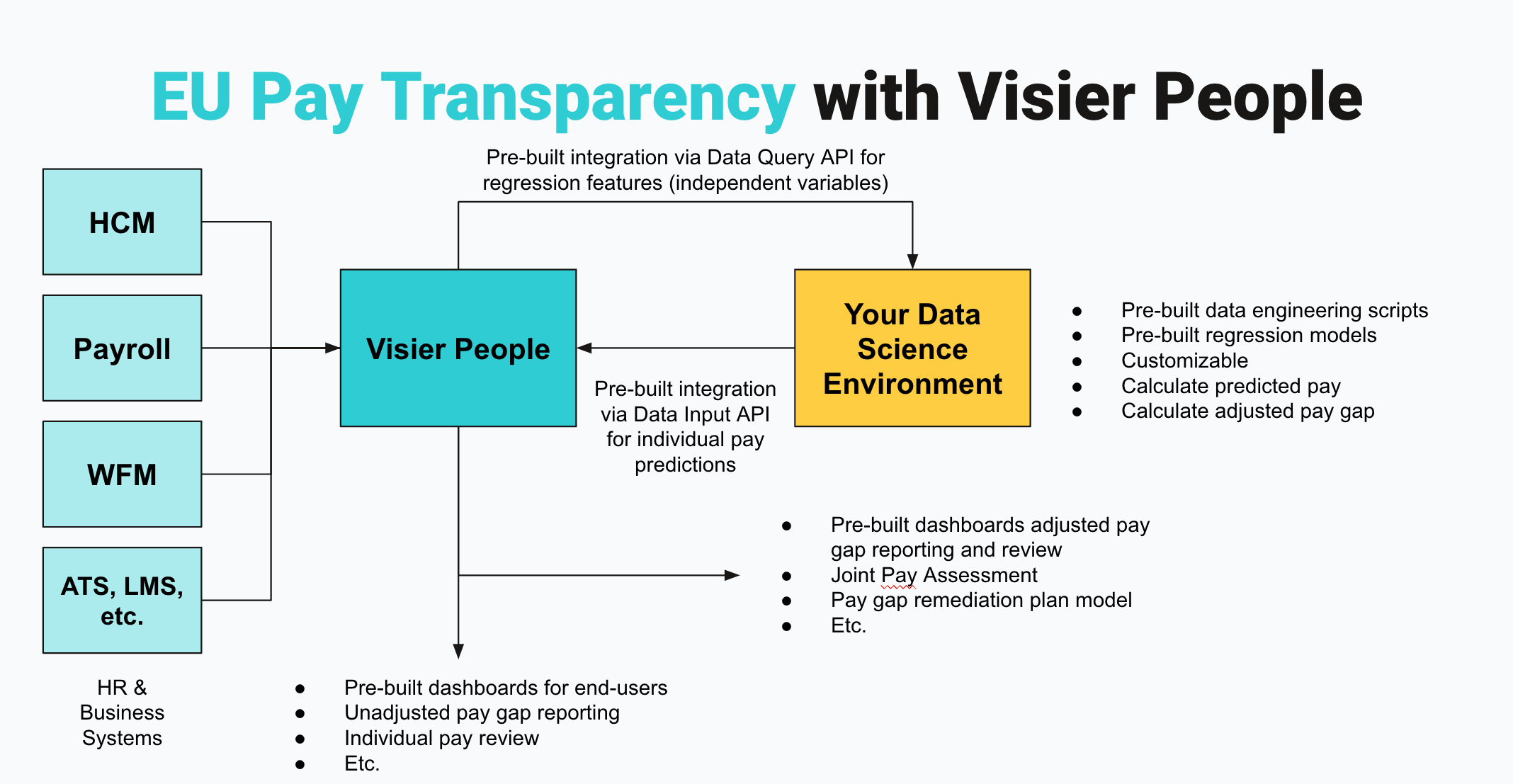EU Pay Transparency Sample Code
EU Pay Transparency Sample Code
Summary
Meet EU Pay Transparency Directive requirements with Visier's solution. Analyze gender pay gaps by integrating people data and using predictive analytics to identify objective factors like experience and education that impact pay. Visualize adjusted pay gaps, create actionable remediation plans, and foster an inclusive culture while minimizing compliance risk.
Problems to be solved
As a total rewards, compliance reporting or audit leader, I need to comply with the new EU Pay Transparency directive, which requires the annual submission of gender pay gap data starting in 2027.
We need to explain our pay gaps to workers by providing detail about the objective and gender-neutral reasons for any pay gap.
This means breaking down our raw unadjusted gender pay gap in terms of the contribution of objective and gender-neutral criteria such as experience, education, productivity, and any other objective factors we choose to consider
Beyond meeting the regulatory disclosure requirements, we need to take proactive action to remediate pay differences to reduce potential liability and create a more equal and inclusive culture, reaping benefits in talent acquisition and retention.
Solution
Combine people data such as demographic attributes, organizational context, performance ratings, educational history, experience with pay data to yield deeper insights.
Perform statistical analysis such as log-linear regression to model how these factors influence pay.
Iteratively do this analysis and at scale to find the best model for each employee population, and calculate the adjusted pay gap for each, and report it publicly.
Plan for and execute how to fix these pay gaps in a timely and cost effective manner.
How it Works
Consolidate people, work, and pay data into Visier’s People Data Model. Visier has connectors to a number of source systems such as HCM (Workday, etc), work systems (ServiceNOW and Salesforce, etc) to make getting started easy.
Using our public outbound APIs, extract individual data records with each person’s pay, and possible explanatory factors such as gender, job title, performance level, age, experience, educational background, and productivity
Using standard data science capabilities in Python, create a log linear regression model combining these factors
Using our public APIs, import the individual predicted pay levels (that are the output of the regression) back into Visier People
Use Visier People to visualize a new adjusted pay gap metric which uses these predictions
Use Visier People to create remediation plans and scenarios - how to combine natural attrition, hiring, the natural merit cycle, and special pay adjustments to reduce your pay gaps below threshold levels.

Screenshots



Solutions
Visier EU Pay Transparency API Sample
Explore our API code sample to help organizations meet the EU Pay Transparency Initiative with Visier's People Data Platform.
Docs: Data Intake Integrations
Learn more about Visier's data intake integrations
Docs: Platform Management
See how you can manage the People Data Platform as your data or your organization changes.
Docs: Studio
Explore how you can tailor Visier to your use case
Docs: Pre-built People Data Model for SaaS
Learn how to build with Visier's robust People Data Model for SaaS applications
Docs: Pre-built Security Model
Deliver your data only to those who need it with Visier's comprehensive security model
Docs: Analytics Suite
Details on Visier's easy self-service experience for delivering analytical insights either through pre-built content or content you can build yourself.
Docs: Visualizations
Explore in Developer Docs the visualization types available in Visier.